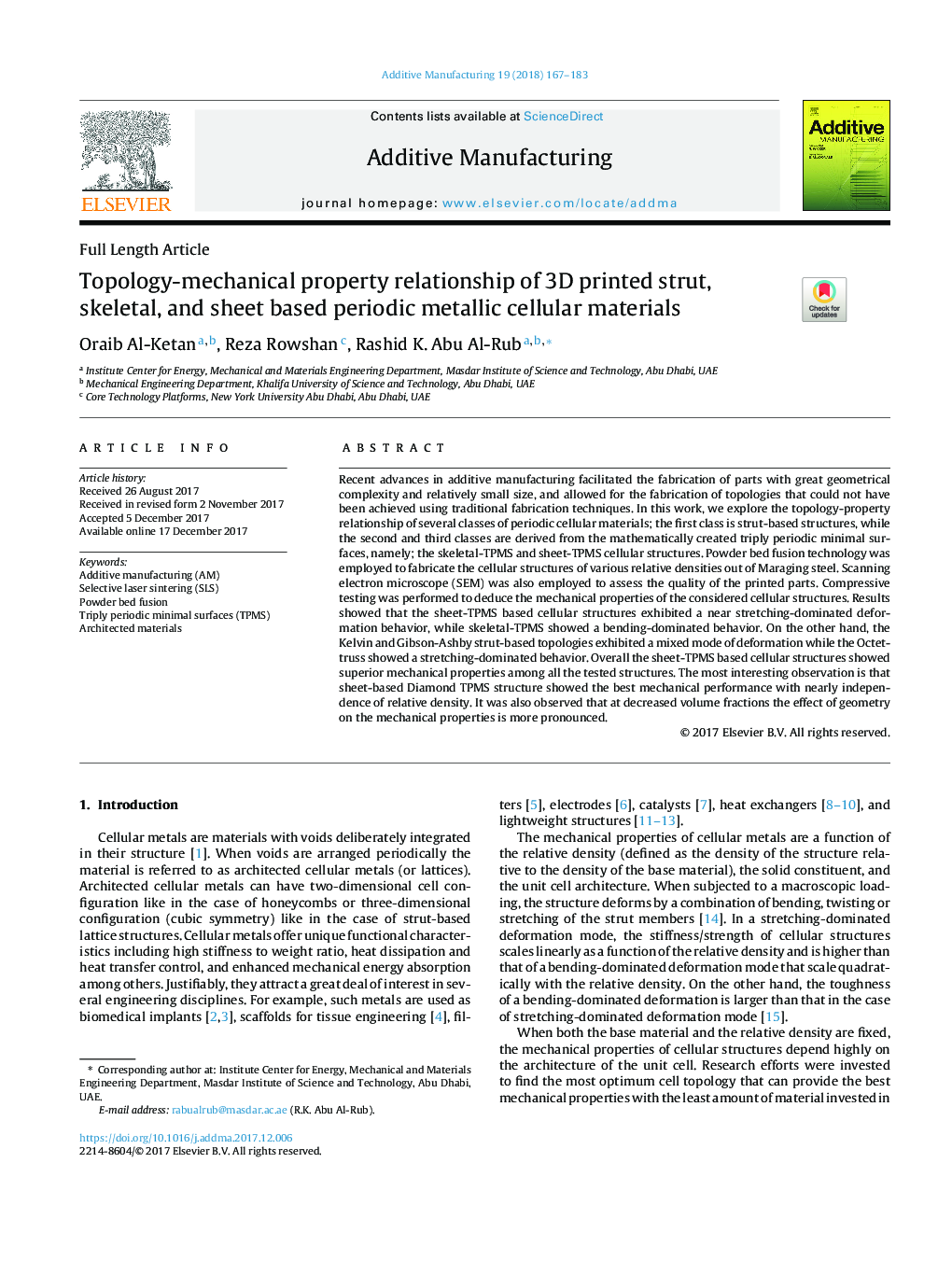| Article ID | Journal | Published Year | Pages | File Type |
|---|---|---|---|---|
| 7205985 | Additive Manufacturing | 2018 | 17 Pages |
Abstract
Recent advances in additive manufacturing facilitated the fabrication of parts with great geometrical complexity and relatively small size, and allowed for the fabrication of topologies that could not have been achieved using traditional fabrication techniques. In this work, we explore the topology-property relationship of several classes of periodic cellular materials; the first class is strut-based structures, while the second and third classes are derived from the mathematically created triply periodic minimal surfaces, namely; the skeletal-TPMS and sheet-TPMS cellular structures. Powder bed fusion technology was employed to fabricate the cellular structures of various relative densities out of Maraging steel. Scanning electron microscope (SEM) was also employed to assess the quality of the printed parts. Compressive testing was performed to deduce the mechanical properties of the considered cellular structures. Results showed that the sheet-TPMS based cellular structures exhibited a near stretching-dominated deformation behavior, while skeletal-TPMS showed a bending-dominated behavior. On the other hand, the Kelvin and Gibson-Ashby strut-based topologies exhibited a mixed mode of deformation while the Octet-truss showed a stretching-dominated behavior. Overall the sheet-TPMS based cellular structures showed superior mechanical properties among all the tested structures. The most interesting observation is that sheet-based Diamond TPMS structure showed the best mechanical performance with nearly independence of relative density. It was also observed that at decreased volume fractions the effect of geometry on the mechanical properties is more pronounced.
Keywords
Related Topics
Physical Sciences and Engineering
Engineering
Industrial and Manufacturing Engineering
Authors
Oraib Al-Ketan, Reza Rowshan, Rashid K. Abu Al-Rub,
